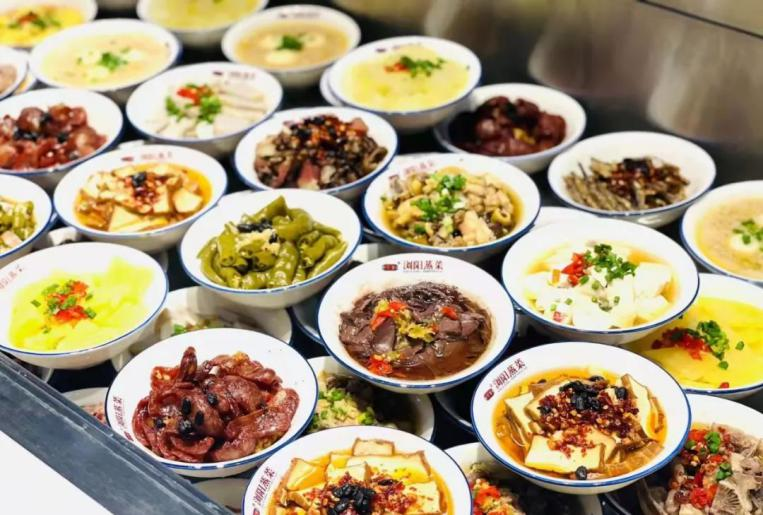
In China’s fast-paced culinary (烹饪的) world, steamed dishes, or zhengcai, are gaining steam as a convenient, affordable, and healthy alternative to traditional stir-fries.
Unlike stir-frying, which dominates Chinese kitchens with its high heat and heavy oil use, steaming preserves nutrients and requires minimal seasoning. Scientific studies support this: Professor Fan Zhihong of China Agricultural University notes that steaming retains vitamins better than boiling or frying. This health focus has fueled zhengcai’s popularity, particularly in Liuyang, Hunan, where steaming is a cultural legacy. With plates or bowls of raw ingredients and seasoning placed in stacked steamers over boiling water, the region’s signature dish takes its name from this cooking method.
Over the past 30 years, Liuyang people have spread zhengcai nationwide, opening over 20,000 restaurants that generated 20 billion yuan in 2022. The dishes appeal to young workers seeking quick, wholesome meals amid concerns about pre-made food hygiene (卫生). Restaurants thrive by standardizing recipes — preparing ingredients in central kitchens and steaming them onsite without professional chefs. Meals are served in small bowls (xiaowancai), allowing diners to mix and match flavors for under 30 yuan.
Despite its growth, zhengcai faces challenges. Stir-frying remains deeply rooted for its bold (大胆的) flavors and cultural significance. Many restaurants still list steamed dishes but serve mostly stir-fries. Higher-end venues struggle to innovate, often just adding basic steamed options to menus. Yet, health-conscious trends are shifting the tide. On social platforms, homemade steamed meals are trending as budget-friendly “fat-loss diets”.
Historically, steaming dates back 3,000 years, with ancient steamers found in Shang Dynasty tombs. Today, it’s not just about tradition — it’s a practical solution for busy lifestyles. Steaming’s simplicity lets anyone prepare nutritious meals quickly. For modern Chinese families, it offers a lifetime of health and convenience — one steamer basket at a time.
原创编写 版权所有 侵权必究! 每日更新 个性化阅读 英语飙升!
1.1. What conclusion can be drawn about steaming compared to boiling or frying?
A It better preserves food nutrients.
B It requires more cooking skills.
C It uses heavier seasoning.
D It originated in Hunan province.
解析:选A。细节理解题。根据第二段中的“steaming retains vitamins better than boiling or frying”可知,蒸制比水煮或煎炸能更好地保存营养成分。故选 A。
2.2. Why are zhengcai restaurants popular among young workers?
A They offer free delivery.
B They provide quick and healthy meals.
C They serve traditional stir-fries.
D They don’t bring hygiene concerns.
解析:选B。细节理解题。根据第三段中的“appeal to young workers seeking quick, wholesome meals amid concerns about pre-made food hygiene”可知,由于担心预制食品的卫生问题,因此蒸菜吸引了寻求快速、健康膳食的年轻上班族。故选 B。
3.3.What is a challenge for zhengcai mentioned in the text?
A High cost of ingredients.
B Lack of social media promotion.
C Difficulty in standardizing recipes.
D Competition from stir-fries.
解析:选D。细节理解题。根据第四段第二句“Stir-frying remains deeply rooted for its bold flavors and cultural significance.”可知,炒菜因其浓郁风味与文化根基,地位难以撼动,这仍是蒸菜的主要挑战。故选 D。
4.4. What can be inferred about the future of zhengcai from the text?
A It may disappear due to tradition.
B It may replace stir-frying entirely.
C It may grow with health trends.
D It may face more challenges.
解析:选C。推理判断题。根据第四段中的“health-conscious trends are shifting the tide”及最后一段对蒸菜实用性的描述,由此可推断,随着健康饮食趋势的发展,蒸菜可能会进一步普及。故选 C。